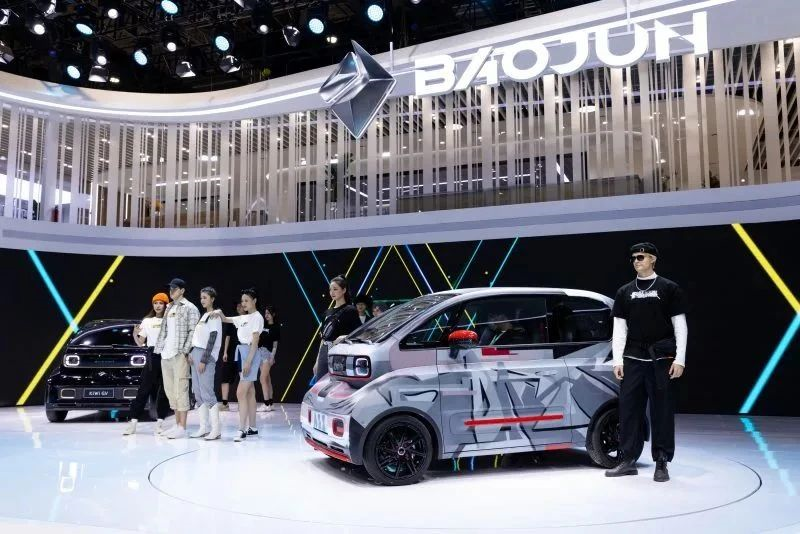“Many domestic electric vehicles are doing very well, such as the KiWi EV which left a deep impression on me when I saw it at other exhibitors’ booths at the Shanghai Auto Show,” said Li Bin, NIO’s founder, during a strategic press conference in Norway a few months ago.
I became very interested in it at that time and immediately searched for it on Baidu with my phone. I found that this car, which Li Bin referred to, was actually the latest pure electric micro-car under the Wuling Hongguang MINI EV brand named the KiWi EV. It is a renamed version of the Wuling E300, and can also be seen as the “deluxe upgrade version” of the Hongguang MINI EV.
Li Bin is also very fond of the KiWi EV. He even went to visit the SAIC-GM-Wuling Liuzhou factory and specially test drove this unique-looking small car. This move even sparked media over-reaction, speculating that NIO’s low-end brand may also launch similar electric micro-cars.
Although NIO’s official statement later clarified that Li Bin’s interest in the KiWi EV was purely his personal behaviour and did not represent the company’s future plans to launch similar models, the KiWi EV still garnered a lot of attention before being officially launched.
On August 31, the KiWi EV (Chinese name “Qiyu”) was finally launched. SAIC-GM-Wuling Baojun brand announced that the new car will provide two models, the basic “Designer” version and the high-end “Artist” version, priced at RMB 69,800 and RMB 78,800 respectively.
The “Designer” version can be equipped with a DC fast charging package (leather seats + DC fast charging function) for an additional RMB 20,000, while the “Artist” version can be equipped with an intelligent driving package (ACC full-speed adaptive cruise control, multi-scene intelligent parking system, 360° panoramic image, etc.) for an additional RMB 80,000.
At the same time, the new car will continue to offer the “Five Gifts upon Launch” policy that was introduced during the pre-sale in early September, providing consumers with 24 interest-free instalments, a RMB 1,000 gift package, and a 7 kW AC charger. Consumers can place orders through Baojun APP, LING Club, and other official platforms starting from the launch date.
If we only look at the vehicle’s performance, the KiWi EV’s range and power are average compared to its competitors in the same class. “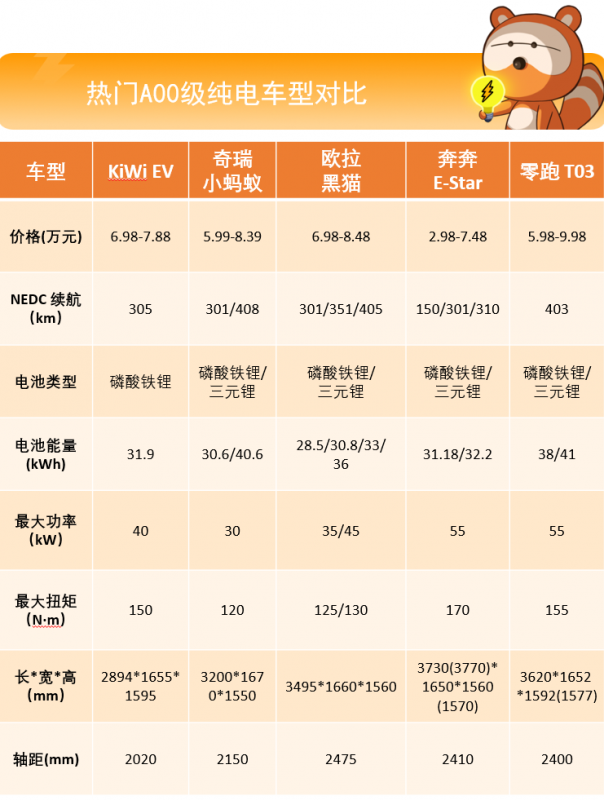
But this hasn’t stopped consumers from being enthusiastic. According to the official statement, since the pre-sale began in early August, KiWi EV has received more than 6,000 orders in just 20 days.
These consumers who have placed orders also have significant characteristics: younger, higher education, and higher net worth–65% of them are between 25-36 years old; 59% of them are female; and 70% have a bachelor’s degree or above, with a high proportion of additional purchases, up to 77%.
Among these pre-order owners are internet celebrity KOLs, female professors from the Chinese Academy of Sciences, and Airbnb hosts, etc., showing that KiWi EV owners cover a rich user base.
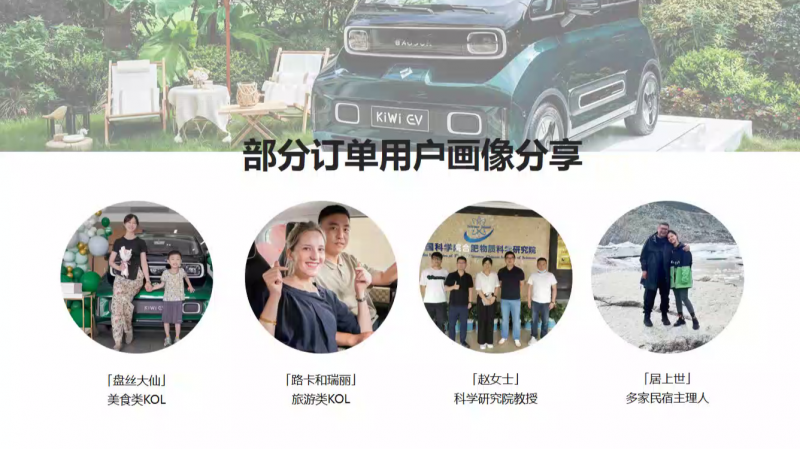
According to the manufacturer’s official statement, KiWi EV is positioned as a “fashionable travel product.” Among the users who placed orders, more than 60% of them bought the car for its individual appearance.
Its design features can be summarized as having a unique appearance and interior:
In terms of appearance, KiWi EV comes in six colors: cream, midnight, emerald green, rouge, mint, and sky blue, and the car body adopts General Motors’ global standard painting process. The car paint spraying line uses fully automatic spraying robots of the same specification as luxury brands, greatly improving the spraying quality of the car body.
The car’s color goes through 42 skilled processes, forming up to 6 layers of surface covering, and with the use of high-quality coloring magnesium powder, pearl powder materials, and two-tone paint layer technology, the car color can maintain its surface gloss for a long time and has properties such as light oxidation resistance, salt fog corrosion resistance, and water resistance.
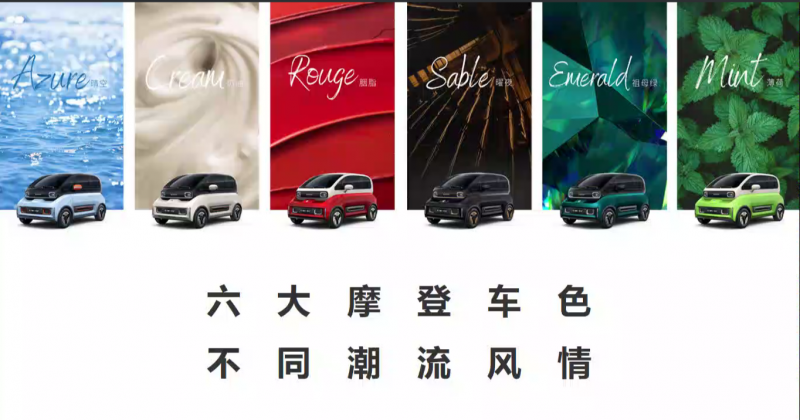
At the same time, KiWi EV’s overall body adopts a TWO-TONE splicing and split-body design, creating a visual effect of a suspended cockpit through a distinct layered contrasting color design.
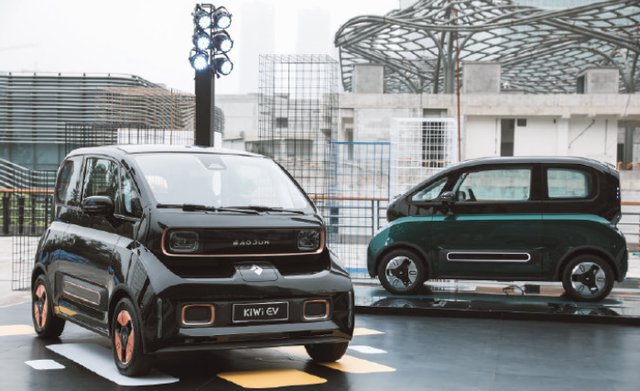
In addition, unlike the cute Chery Little Ant and Euler Black Cat models, and different from the square Wuling Hongguang MINI EV, KiWi EV’s body shape presents a “round with square” design, where the cross-shaped LED daytime running light brings strong recognition, and there is also a unique “concave” design below the headlight group.
According to the official statement, this left and right front face design can also form a “golden photo spot,” satisfying the needs of young girls for shaping and street photography.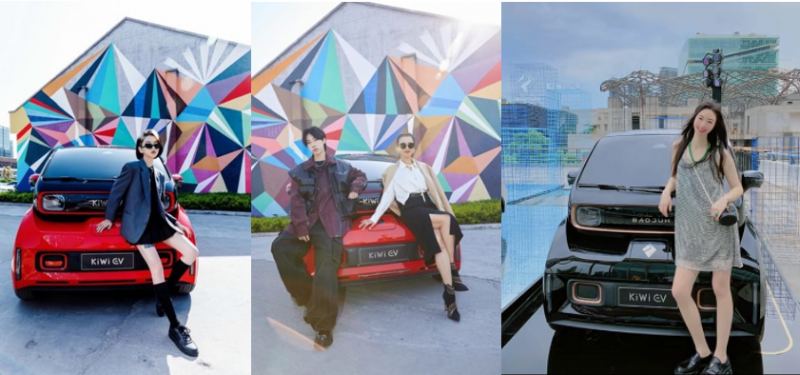
I am really looking forward to borrowing a test drive car later, and having Professor Chang, who has short legs, take a set of modern photos with the KiWi EV as the background (manual dog’s head).
When you come to the car, the official emphasizes that the KiWi EV is the first electric car in China to use rice and straw plant fibers (accounting for more than 20%) as materials.
This material is used in 12 parts including the instrument control, left and right door decorative panels, and storage boxes. In addition to environmental protection and advantages in reducing the weight of the entire vehicle interior, it can also give the KiWi EV a unique and slight wheat fragrance, and there will be no strange smell even in the sun exposure environment.
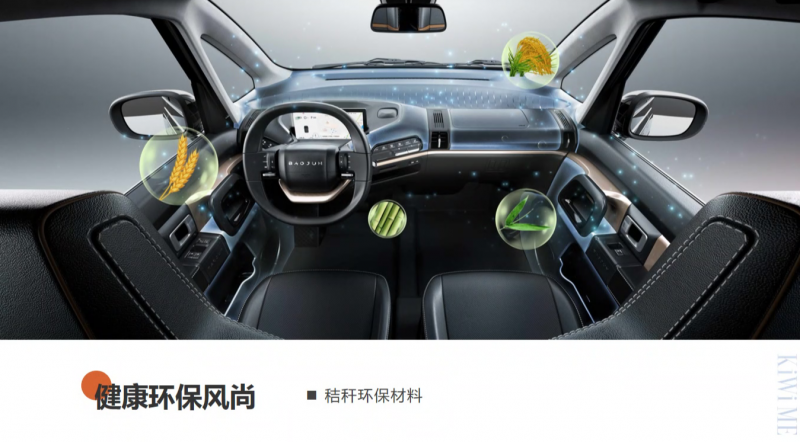
At the same time, KiWi EV offers two interior color schemes. The light-colored interior uses dark and cold gray collision color matching; the dark-colored interior uses classic carbon black and trendy rose gold matching.
It is worth mentioning that the dark rose gold uses electroplating-grade paint with particle size below 7 μm. Through unique paint spraying technology, the paint surface has a delicate texture, making the touch more warm and comfortable.
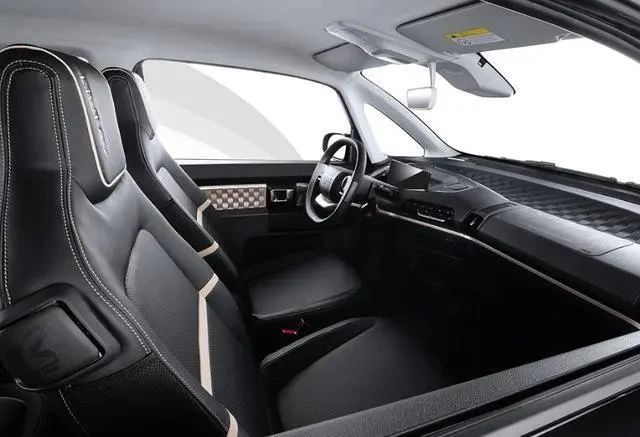
The length, width, and height of the KiWi EV are 2894/1655/1595 millimeters, and the wheelbase is 2020 millimeters, making it a standard small car. The interior seats adopt an independent four-seat layout, and all four seats can be controlled independently, allowing the owner to choose freely among 2/3/4 seat layouts according to needs.
There is a one-key entry and exit button on the side of the front passenger seat. Pulling up this button can adjust the folding and forward movement of the front passenger seat. Even if getting off from the rear space, the rear passengers can operate it independently, which is convenient to get in and out.
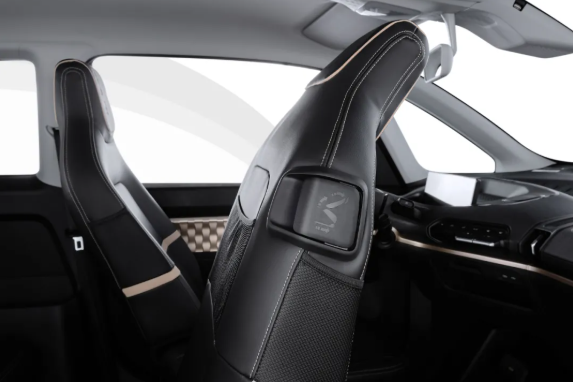
There are more than 7 types of storage spaces in the car, which is convenient for storing keys, driving licenses, mobile phones, water cups and other items. The rear seats can be laid flat, forming a large rear space, which can be used to place items in special circumstances and can accommodate 3 20-inch suitcases.
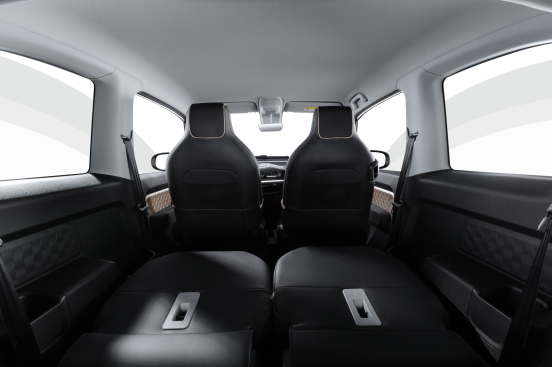
Of course, if you still prefer leather seats, you can choose the high-end “Artist” version or purchase the “DC Fast Charge Pack” to improve seat comfort.In addition to its small size, KiWi EV does not compromise on safety and intelligence. The new car is fully equipped with front dual airbags, ESC stability control system, ABS+EBD anti-lock braking and brake force distribution system as standard on all models.
When equipped with the Intelligent Driving Package, the high-end model can also add AEB Automatic Emergency Braking System, 360 ° panoramic imaging and other active safety technologies.
KiWi EV battery pack undergoes up to 16 rigorous safety tests and is surrounded by all-round high-strength steel protection, plus intelligent battery safety systems to fully ensure battery safety.
In terms of intelligence, KiWi EV is equipped with the latest car networking 2.0 system from Baojun, which can realize voice interaction without awakening, phone as car key, remote air conditioning opening by phone, OTA remote upgrade and other functions.
Since its launch last year, Hongguang MINI EV, a subsidiary of SAIC-GM-Wuling, has consistently occupied the top position in the monthly sales of new energy vehicles, with sales exceeding 150,000 units to date.
This enables manufacturers to see the potential of the small electric vehicle market and is a vivid portrayal of China’s new energy market transitioning from “policy subsidies” to “market demand.”
In 2020, SAIC-GM-Wuling has established a global small pure electric vehicle architecture (referred to as “GSEV”) and built a new energy test laboratory in Guangxi to develop new energy vehicle application scenarios such as intelligent driving and power battery hierarchical utilization. Currently, the cumulative sales of GSEV series products have exceeded 500,000 units.
From MINI EV to KiWi EV, we can also see that SAIC-GM-Wuling’s future direction in the field of small electric vehicles will focus on more personalized, safer, and more intelligent research and development ideas.
Making pure electric small cars not just a means of transportation for urban commuting, but a choice for more young users to express themselves.So, can KiWi EV replicate the glory of Hongguang MINI EV in terms of sales in the market, and will it lead the development direction of A00 pure electric vehicles in the future? Let’s wait for its subsequent market performance to give us the answer.
This article is a translation by ChatGPT of a Chinese report from 42HOW. If you have any questions about it, please email bd@42how.com.
